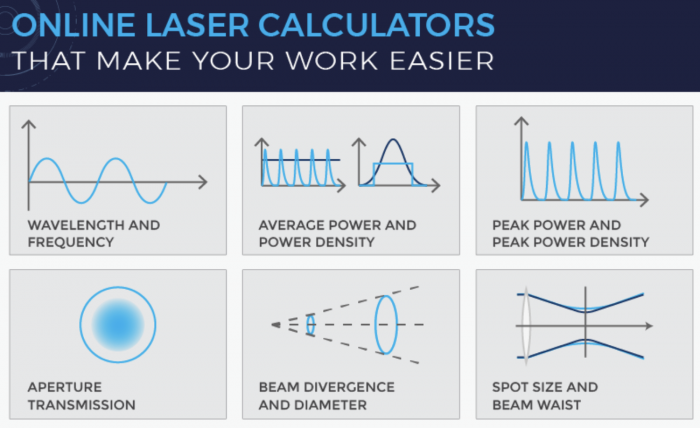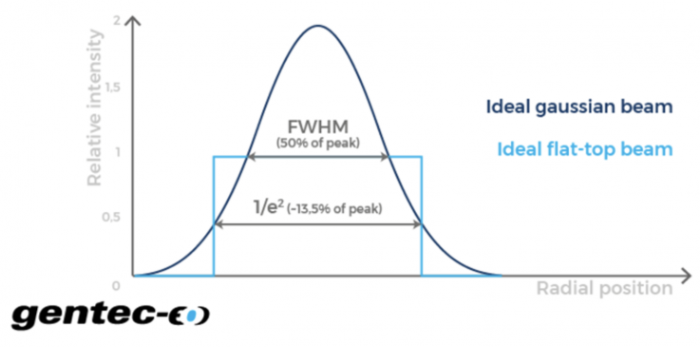gentec-eo: Safely measure a high-power laser with an appropriate detector

You are worried that your multi-kilowatt laser might damage your power detector and that it could cut through your power meter just like it does regular sheets of metal? Keep reading you are at the right place.
AVERAGE POWER
First, let’s state the obvious…yes if you use your laser power meter to measure higher power than the maximum that is listed for the detector you will eventually break it. Depending on how far over the limit you are, it may take longer. That’s actually why most manufacturers, just like us, give two different values when maximum average power is involved: “continuously” and “1 minute”.
I think these are pretty self-explanatory but, since we are stating the obvious, those values mean that you could use the detector to measure the associated power for either, 1 minute maximum, and then let the meter cool off or take measurements indefinitely while limiting your laser power to the “continuously” value instead. All that comes down to how efficient the power meter is to get rid of heat.
What if I only take 30-second measurements or maybe 10-second measurements you might ask? What would be the maximum power then? Will measurements remain accurate? Well, it would be far too long and complex to make these kinds of characterizations for every product, BUT we took the concept and created a special line of products built around just that. If you want quick accurate readings and then move on? Our PRONTO laser power meters are what you are looking for!
They are a full lineup of all-in-one detectors based on 5s single-shot laser beam power measurements. With these, you can easily make measurements that go up to 10 kW without any external cooling.
Gentec-EO’s high-accuracy laser beam measurement instruments help engineers, scientists and technicians in all sorts of laser applications from the factory to the hospital, laboratory and research center. Learn about our solutions for these measurement types:
POWER DENSITY
Now that the obvious is out of the way, let’s look at our first grown-up problem, power density. To have a laser beam cut through metal, you have two choices, you can either ramp up the power or make the beam really small and dense. Being able to focus a laser beam really tightly relies on beam quality, like the M2 factor. To deepen your knowledge about the subject, take a look at our beginner’s guide to laser beam quality and M2 measurement.
Assuming your laser equipment, as most of them are, is based upon small AND powerful beams, to make high-power measurements, try to spread the beam on a wide surface as much as possible. Gentec-EO’s power meters are really resistant and can handle really high-power density, so in your specific case, it might not even be needed at all, but keep in mind that they are not indestructible either.
What’s happening on the detector is that you need to lower the power density so that the detector’s absorber can deal with the flow of energy and diffuse heat without melting or having its surface vaporized. To make the beam larger, you can either do it with the proper optics or simply let divergence work its magic.
Special note about power density: your beam profile will impact significantly its power distribution in space. To know more about it, take a look at our online power density calculator.

PULSED LASER?
Apart from the previously stated details, when you’re working with pulsed lasers, you also have to take into account pulsed width. The shorter the pulse the more concentrated in time the energy is delivered to the detector. This is why there is multiple maximum energy density in J/cm2 associated with the same device, each relating to one specific pulse width. As a rule of thumb, you can assume that longer pulses mean higher maximum energy density for the meter.
To avoid damage here, you basically have to take a look at the user manual and stay inside the qualified specifications for the product. If your pulses are very short and energetic, there’s nothing you can do really to make them longer. What you could do though, is to use the same approach as with power density, and spread the pulse on a wider surface.
For more information, please visit: https://www.gentec-eo.com/blog/
News Categories
- » NEWS HOME
- » Automation & Robotics
- » Industry 4.0
- » Material Handling
- » Sensors
- » Quality & Testing
- » Machine Vision
- » Laser & Optics
- » Metalworking
- » Motion Control & Drives
- » Hydraulics & Pneumatics
- » Process Industry
- » Renewable Energy
- » Agriculture
- » Home & Office Furniture
- » Environmental Tech









